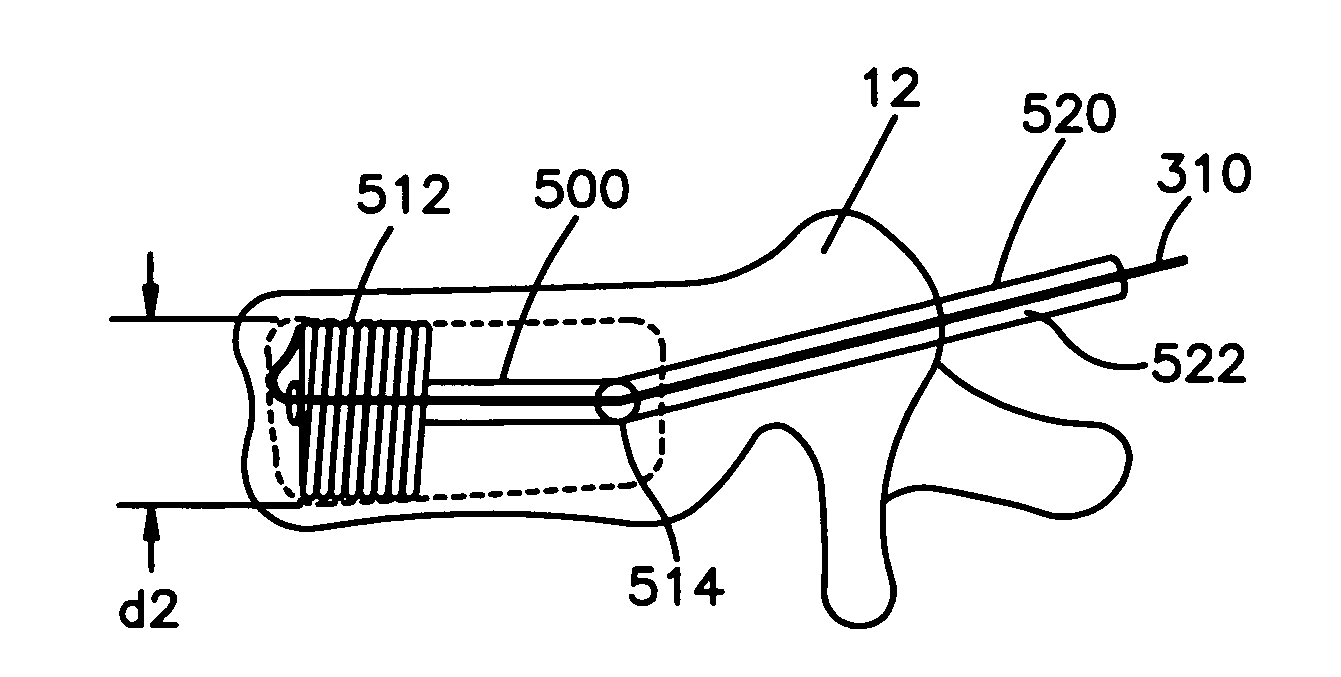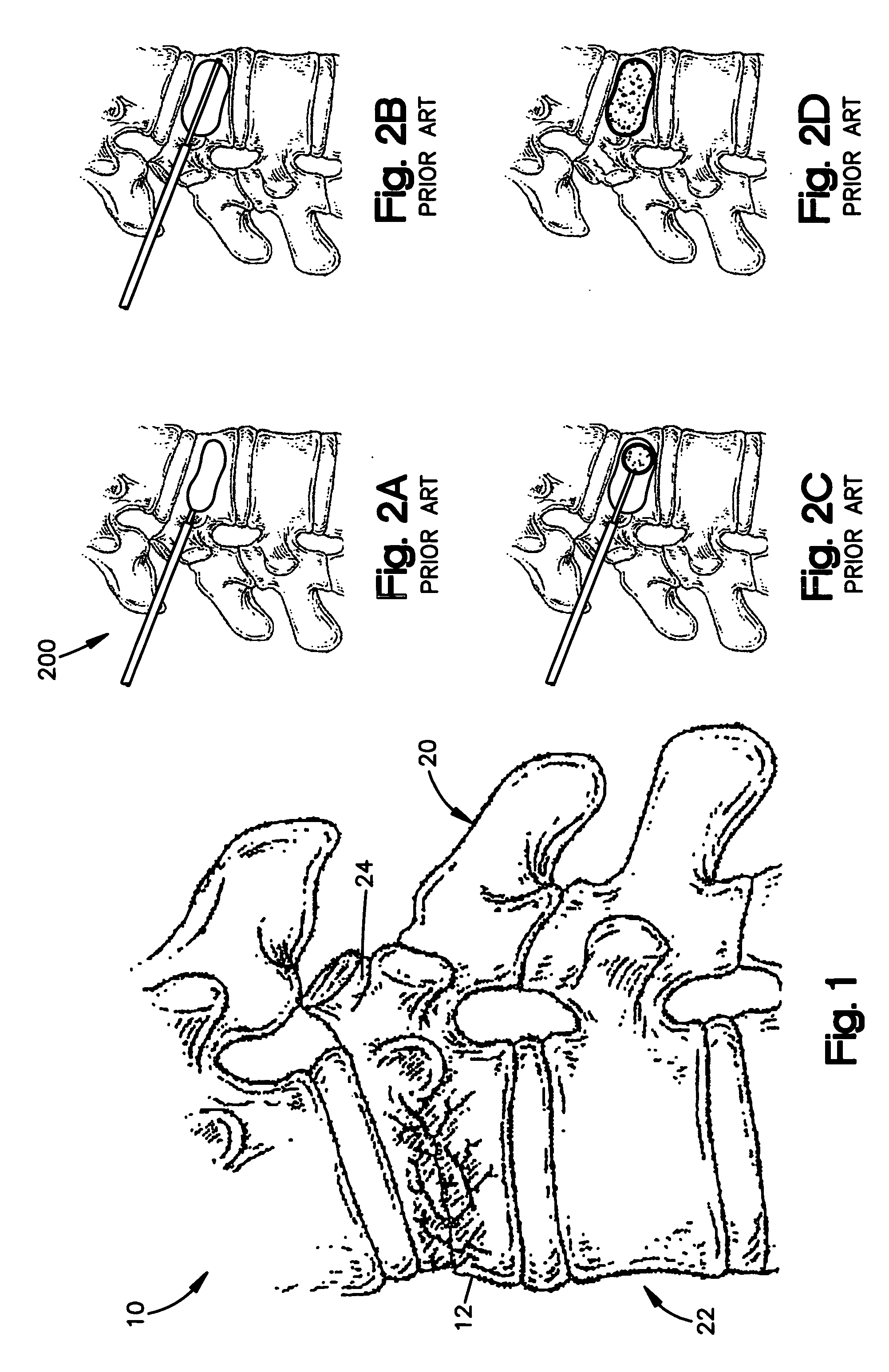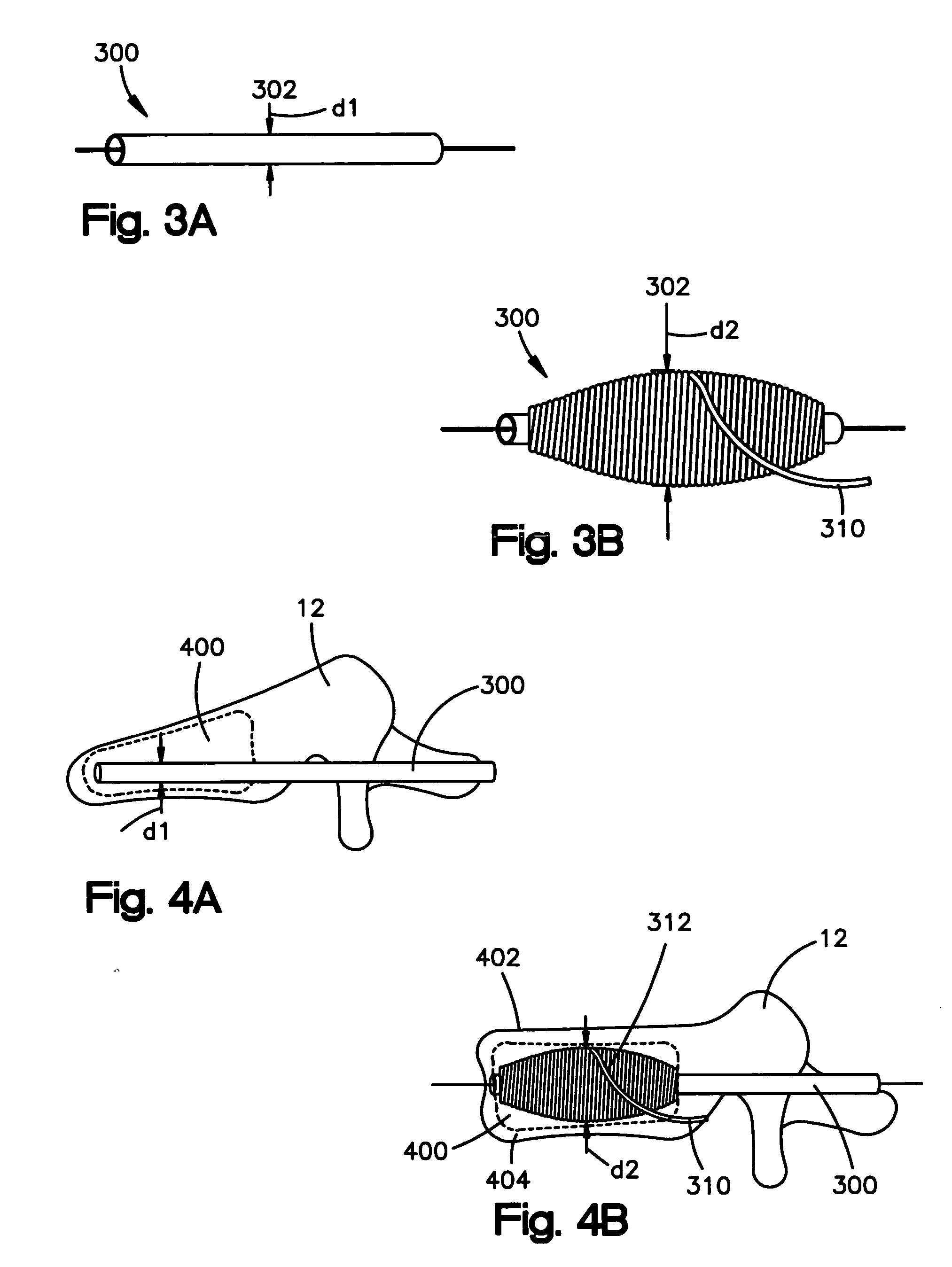Apparatus and methods for treating bone
a bone and bone technology, applied in the field of surgical implants, can solve the problems of repositioning the fractured bone, not addressing the problem of spinal deformity, and limiting the treatment of compression fractures and related deformities, so as to increase the diameter of the coiled body, increase the space, and increase the radial
- Summary
- Abstract
- Description
- Claims
- Application Information
AI Technical Summary
Benefits of technology
Problems solved by technology
Method used
Image
Examples
Embodiment Construction
[0105] A vertebral body may be filled, augmented, or repositioned through insertion of one or more implants into an internal portion of the vertebral body, between the endplates of two adjacent vertebral bodies, or in other bone, e.g., a femur. In one embodiment, a vertebral body implant may comprise a bobbin with a thread, string, or wire, collectively referred to herein as a band 310, coiled around the bobbin to create a larger diameter mass or body, sometimes referred to as a coiled assembly, coiled band assembly, coiled body, final implant, or implant. The bobbin with the attached band may be inserted into the vertebral body through, for example, transpedicular access canals having a diameter of about 5 mm.
[0106] Referring to FIG. 3A, an elongated member 300, which may be cylindrical and is hereinafter referred to as a bobbin 300, has a certain diameter d1302. After insertion of bobbin 300 into a collapsed vertebral body, band 310 is coiled around bobbin 300 to create a larger ...
PUM
 Login to View More
Login to View More Abstract
Description
Claims
Application Information
 Login to View More
Login to View More - R&D
- Intellectual Property
- Life Sciences
- Materials
- Tech Scout
- Unparalleled Data Quality
- Higher Quality Content
- 60% Fewer Hallucinations
Browse by: Latest US Patents, China's latest patents, Technical Efficacy Thesaurus, Application Domain, Technology Topic, Popular Technical Reports.
© 2025 PatSnap. All rights reserved.Legal|Privacy policy|Modern Slavery Act Transparency Statement|Sitemap|About US| Contact US: help@patsnap.com



